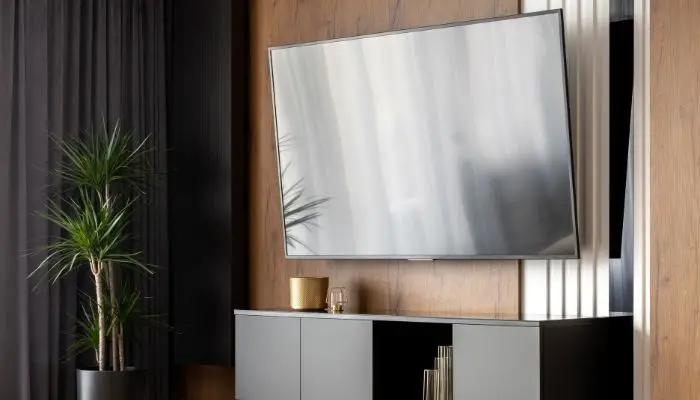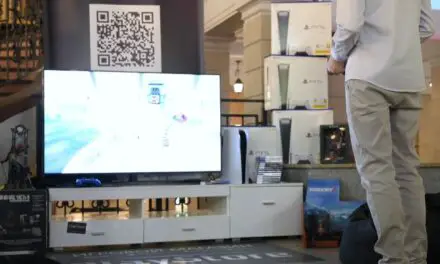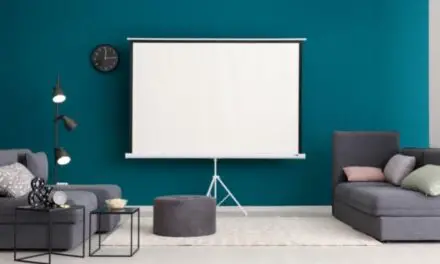Believe it or not, OLED (Organic Light Emitting Diode) technology was invented in 1987 by Steven Van Slyke and Ching Wan Tang.
And it’s the gorgeous visuals these screens present that make them one of the most widely used display technologies on the planet.
But do these vibrant displays come with a long enough lifespan to offer value for money?
Table of Contents
How Long Do OLED TVs Last?

A brand new OLED TV, manufactured by a reputable company, should last up to 11 years at a usage rate of 10 hours per day.
This is according to a claim by LG Electronics as a result of a study conducted at Gumi Manufacturing.
However, the life you’ll get from your OLED TV will depend on the settings you use, the type of content you watch or play on it, and for how long you watch or play games on it.
I.e., ten hours of daily gaming in 4K and watching news channels could wear out your TV in five years while ten hours of watching movies and TV shows every day could see you get 11 or more years of use from it.
The biggest issue with wear on OLED TVs is image retention (burn-in).
Burn-in occurs when an image or graphic remains static on the TV’s screen for too long and becomes burned into it.
This mostly occurs when gaming or watching news channels that display static logos and graphics, like CNN or BBC News.
For example, pausing your OLED TV for a couple of hours each day during gaming could lead to burn-in in just a couple of years.
Likewise, the logos and other graphics on news and sports sites that stay present on the screen can wear pixels and become burned in.
Once your OLED TV begins to suffer from burn-in, the old image your TV was displaying will partially remain on the screen, even when a new image appears.
With burn-in, you’ll be left seeing remnants of old images over new images that should no longer be displaying.
However, not every OLED TV is created equally and there are some things you can do to help it last longer.
Also, newer OLED TV models have special settings to help them live longer by stopping burn-in.
You just have to know what settings to look for, which we’ll discuss later in the article.
Does OLED Degrade Over Time?
The “O” in OLED stands for “organic” and that’s the keyword to focus on here.
Anything organic will degrade over time.
And how much time it will last can be determined by a litany of factors:
- Frequency of use.
- The type of content watched or played.
- Burn-in or image retention.
- Brightness settings.
- Use of screensavers.
- Other power-saving features.
Burn-in, otherwise known as image retention, has been a hotly debated topic when it comes to OLED TVs.
Early use of the technology proved that image retention was something to be concerned about.
However, LG—who manufacturers most OLED displays—has since introduced technology that dims static elements, such as an ESPN logo that remains on the screen, or a video game logo that doesn’t fade throughout the game.
New model OLED TVs from top brands like LG, Samsung, Sony, etc., usually come with special features and settings to help maintain image quality for longer and prevent burn-in.
If possible, buy a new model OLED TV from a recognizable brand as it will have all of the latest screen repairing and saving settings.
Most people probably will not own an OLED TV for longer than ten years before upgrading, however, as of right now, inferior displays—such as LCD—tend to last a little longer.
Read Next: Can a TV Get a Virus from a USB? (And What To Do)
Can I Fix Burn-In On My OLED TV?
OLED burn-in results from the uneven wearing of sub-pixels and this can only be fixed if it is caught early and your TV has a feature that refreshes pixels.
If your TV has a pixel refresher you’ll be able to scan it for pixel wear.
This scan will automatically detect worn pixels and try to compensate for the damage.
If the damage is too severe or if your TV doesn’t have this feature, there may not be a way to even out the wear that has occurred.
All you can do is contact the brand and see if they can do a panel replacement.
LG has been known to offer a one-time courtesy panel replacement on some older model OLED TVs so it might be worth giving them a call.
How Can I Extend The Life Of My OLED TV?
There are a lot of ways to do this and the methods here could also be applied to any TV.
You can extend the life of your OLED TV by opting to buy the latest model, turning down the brightness, making use of screensavers, and avoiding bright, static images that remain on the TV screen for long periods.
Check Your TV For Specific OLED Settings
Many Modern OLED TVs come with special settings that help to reduce image retention.
Look through all of the picture settings and watch out for ones like screen shift and logo brightness adjustment.
Screen shift will slightly move the image on your screen around at regular intervals and keep pixels moving so that static images cannot wear them down and cause burn-in.
This stops the same image from sitting on the same area of your screen for too long and reduces wear on the panel.
The second setting to look for is logo brightness and adjusting this allows you to dim the brightness of static images on your screen (like news logos) and this also goes a long way in reducing the risk of burn-in.
Lower Brightness And Contrast
OLEDs don’t require a backlight and instead, produce their own light.
As the saying goes, “the candle that burns twice as bright, burns half as long.”
Contrast and sharpness also have effects on brightness and energy consumption.
Placing them at 85% won’t have much impact on the display’s effectiveness and clarity.
Use A Screen Saver
Screensavers also help avoid image retention, reduce power consumption (a repeating display uses far less computing power than streaming on Netflix), and are easy to set up.
Leave Space For Air To Circulate Around Your TV
Like any computer or power-consuming device, OLED TVs get hot.
Letting them sit flush against the wall limits their cooling capabilities and could certainly diminish their longevity.
Set Your TV To Power Off Automatically
You can’t always rely on your screensaver to come on and on some TVs, if you’re using a PlayStation or some other external device the screen saver may not activate.
As a backup to this, you should set your TV to automatically power off after 2 hours, or less.
So, if you have to leave the house in a hurry and the PlayStation Home screen is left displaying on your TV, at least it will switch off after two hours if the screensaver doesn’t kick in.
Turn Off The TV Screen If Listening To Music
If you’re using your TV to listen to music and you’re not too bothered about watching the music video or some other fancy visuals, it’s best to turn off the screen.
You can usually find an option to turn off the screen while not interrupting audio by looking under your TV’s energy-saving settings.
Zoom Your TV Screen In To Exclude Logos And Other Static Images
Sometimes, if you’re watching sports or news channels there can be a row of static images running along the bottom of the screen displaying updated sports results, stock market prices, or some other type of information you might be able to do without.
A handy way to stop these images from appearing on your screen is to change the aspect ratio in picture settings and zoom your screen in so that those static images are left outside of the field of view.
Check Settings After Software Updates
Sometimes, after your TV has installed a software update you may go back into settings and find that everything has been set back to default or that they have been altered in some other way.
Be sure to double-check settings after software updates just to make sure that all the settings you’ve applied are still the same.
What If I Notice The Early Signs Of Image Retention?
If you notice the early signs of image retention on your OLED TV, look for a setting in the Picture menu called “Pixel Refresher”.
A Pixel Refresher will scan your TV, automatically detect worn pixels and then compensate for them as needed.
This feature can be found on new LG OLED TVs.
If your TV is from a different brand, you’ll have to look through the settings to see if you can find a similar feature.
If you notice the early signs of images not disappearing from your TV as soon as they should, the pixel refresher can be a great way to solve this before it gets worse.
What Are The Disadvantages Of OLED TVs?
OLED displays are well-regarded and very popular, especially in smartphones and smart TVs.
Like any technology, there are disadvantages, however.
Lifespan
At the top of the list would probably be longevity. Even with LG’s extensive testing, the best estimates still place it behind LCDs.
Sunlight Readability
Sunlight, or extremely bright light, is another issue. OLED displays don’t perform as well as the competition in direct sunlight.
Production Costs
Despite the fact that OLED was invented in 1987, production costs remain high due to materials and a far more recent embrace of the technology.
HDR
High Dynamic Range requires brightness levels and settings that could potentially reduce an OLED display’s lifespan.
Of the four listed above, HDR probably represents the greatest threat to an OLED TV’s shelf-life.
After all, brightness—or at least sustained levels of brightness—seem to be an OLED display’s kryptonite.
All Things Considered
OLED technology has been around for a long time, has been thoroughly vetted, and is used in a wide variety of applications.
While it’s a relatively new technology, that doesn’t mean it’s a relatively unknown technology.
Sure, the lifespan of an OLED doesn’t match LCD and Plasma displays.
However, even an eight-year span is a long time to own a TV set and the advantages far outweigh the disadvantages in terms of visual superiority.
Considering the breakneck advances in display and computing technologies over the last decade alone, OLED displays will either improve or be rendered obsolete in the near term.



